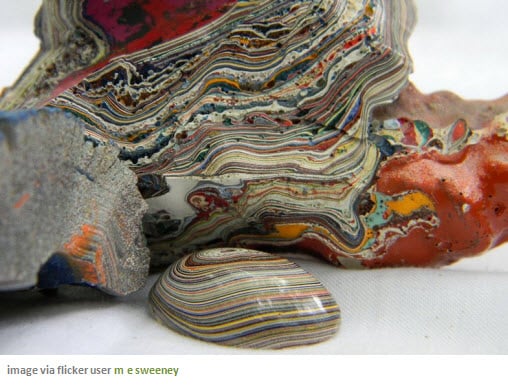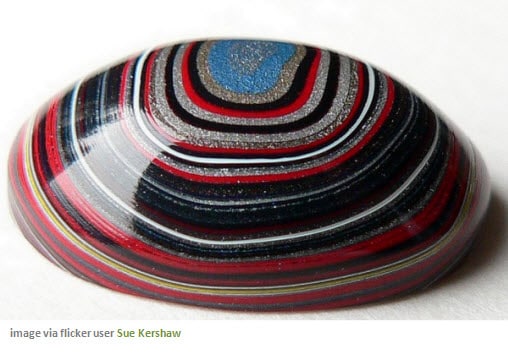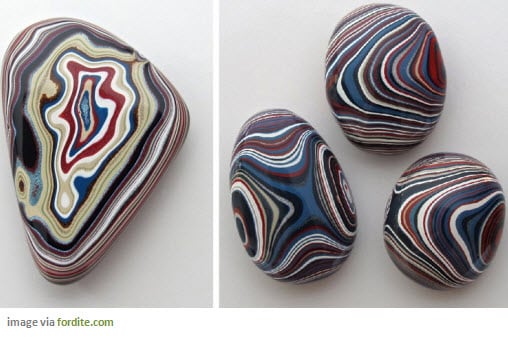
While the unique formation you see above resembles a naturally occurring stone called agate, it is actually a manmade enamel material called Fordite and it's got a very interesting history. Like the rings in a tree bark reveal the environmental occurrences that took place as it aged, the layers and color changes in Fordite represent a time when auto factories used non-automated car painting techniques.
What you see in the "stone" above is layers of old paint drippings that have been forged together over decades in Detroit-area factories. Back before the painting process was mechanized, factory workers hand spray painted cars on long production tracks. Over many decades, paint drippings collected on the tracks and were "baked" in when subjected to the high heat of the large ovens where cars were placed to finalize their paint jobs.
The substance, also known as Detroit or Motor Agate, represents a piece of America's car industry that cannot be recreated. Today, the painting process is automated, so Fordite is no longer being created, which has made genuine Fordite a valuable material. Many artists use it to create recycled jewelry and other decorative objects, or when sanded down and polished, it's turned into beautiful Fordite "stones" like the ones pictured below.
Another interesting aspect of Fordite is that it reflects popular color trends from various decades. For example, Fordite composed primarily of black and brown enamels was most likely formed during the '40s, while Fordite created during the '60s is infused with a more vibrant palette of colors.


